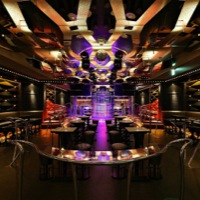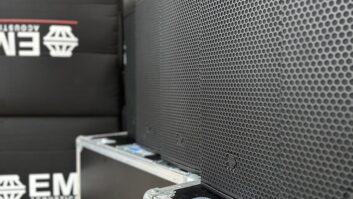
Blanket expectations of improved quality have yielded a demonstrable increase in the standard of audio systems in bars, restaurants and clubs over the past decade. But are some venues still cutting corners when it comes to integration expertise, asks David Davies?
If you were seeking to track the arc of commercial audio development over the past 10 years, you would be hard-placed to find more useful indicators than bars, clubs and restaurants. Public-facing in the most intensive way possible, they have had to remain at the very forefront of technological developments in order to maintain their reputation – and their clientele.
At least, that is the theory – and with more accurately directed speaker systems, evermore efficient amplifiers, and increasingly sophisticated digital signal processing reaching the market, venues have certainly had the tools at their disposal.
While there remains a sizeable percentage who are sceptical of the long-term value of investing adequately in their sound systems, the number of – in particular – bars and clubs that have consistently raised their game has been sufficient to ensure a demonstrable overall improvement in audio standards.
And ultimately, as Martin Audio research & development director Jason Baird, points out, it’s a symbiotic relationship between all parties concerned.
“From manufacturers to installers, owners and customers,” he says, “the expectations will always be for improvements in sound quality, coverage and control – so it’s a virtuous circle.”
Installation’s journey through this diverse market begins with the identification of four key areas where, a consensus suggests, audio quality has definitely improved – before moving on to highlight a couple of issues that remain to be addressed.
1. Higher-quality speakers… across the board
The advent of more compact, higher-quality digital mixing consoles pitched at low
price-points has been one of the defining pro-audio trends of the last half-decade. In a similar fashion, the emergence of lower-cost speakers from the likes of JBL, RCF and many others with specifications comparable to their bigger brothers has made superior audio accessible to a far greater percentage of venues, particularly those with a smaller capacity or more niche appeal.
Jon Sager is senior manager, market development for Installed Sound at JBL Professional. “In recent years, there have been a number of lower-cost speakers that have come to market, making it an easier decision to install a new system or to upgrade an existing one,” he says. This contrasts with the previous situation where “a lot of establishments would purchase home stereo speakers and amps for their sound systems. Unfortunately, these systems didn’t hold up well as high-energy media became the norm.”
The introduction, from early in the decade, of more self-powered speakers that do not require standalone amplification has been especially advantageous – particularly for space-restricted venues. Sager explains: “They don’t need an equipment room or closet to store racks of amps and processing, which is a huge saving when you consider HVAC needs and all the other requirements to build racks and run cables.”
2. Aesthetically pleasing solutions
With venues focusing evermore firmly on aesthetics – both in terms of their distinctiveness and overall quality – it’s only logical that their owners have become increasingly exacting about the need for solutions that slip seamlessly and, as much as possible, unseen into the built environment.
Although admitting that he doesn’t “see any major revolution in terms of bar sound reinforcement recently”, Baird does identify “a continual evolutionary improvement in the performance and visual appeal of products as they come to market”.
Focusing on smaller bars and restaurants, Sager similarly draws attention to the abundance of more powerful, space-sensitive solutions “which tend to provide high fidelity, high output and are architecturally acceptable for designers and owners who want to hear great sound but don’t want to see it”.
3. More powerful DSP
As commercial audio projects have evolved from straightforward speaker-and-amp installations, so has the scope for them to include digital signal processing technology that allows systems to be precisely configured to complement the dimensions and materials of a given space.
“With the integration of EQ, delay, speaker presets, noise gate and crossover in a single device, a system can be perfectly tuned to match the requirements of a particular room or interior,” says Daniela Bohl, marketing manager of Fohhn Audio. “Thanks to DSP technology, you have the opportunity to tune systems perfectly and use the delay function, for example, to adjust the sound in sub zones faster and more efficiently.”
Scott Wakelin – TC Group’s direct markets manager for install and tour – agrees that the development of install-oriented DSP has made a real difference and “in general lifted the quality and reliability of the kit in this sector. The inclusion of a number of EQ and gain control criteria means that there is no excuse for not achieving at least a reasonable end-result so long as the correct equipment for the project has been specified.”
4. Combined or multipurpose solutions
Although there is a general feeling that activity levels have rallied somewhat since the dark days of 2008-10, one lasting impact has been the understandable tendency of venues to explore greater diversification in an attempt to bolster footfall; for example, operating as a restaurant by day, before mutating into a floor-filling bar or compact club by night.
“There has been a relative downturn in this market sector in recent times,” says Wakelin, “but in some cases this has spawned an evolution of the standard venue types into altogether more viable business models. The growth of the club, bar and restaurant venue, for instance, is a market area that we are very successful in already and [where we] hope to see a good deal more growth in the coming period.”
Drawing on examples from the Tannoy range, Wakelin underlines the ease with which combined-type venue owners can these days mix and match solutions from a single company’s portfolio. “The hugely flexible VX loudspeakers have a perfect partner in the new VSX subwoofers, which can even form an ideal solution for small performance spaces, while other products like DI, DVS, CMS and CVS from Tannoy can provide something for every space – whether it is a bar area, the kitchens, or even patios or outside dining areas.”
Although the bar and restaurant sectors have undoubtedly faced their fair share of challenges in recent years, there has been even greater concern that the club market – so robust, so vibrant in the late ’90s and early Noughties – could be experiencing an intractable decline. It’s a fear that hasn’t exactly been dampened by the preponderance of ‘clubbing in crisis’-style articles in both the specialist and mainstream media.
But perhaps it’s a misperception; Martin Audio and JBL are among many companies to identify current good business in new and revamped club installs, with JBL’s Sager remarking that “club owners are upgrading systems all the time”. The recent, enthusiastic embracing of club culture by audiences in the US – where EDM (electronic dance music) is all the rage at present – has certainly helped. “With all the attention EDM has received over the past five or six years, new clubs seem to be opening on a fairly regular basis,” says Sager.
But while the overall health of the sector is felt to be fairly good, it’s not to say that it isn’t possible to identify a couple of specific areas where improvements could still be made…
1. Willingess to invest
Despite recent advancements, a knowledge gap endures in some parts of the club market. “Some [club owners] wonder why other clubs are more successful than their own, but do not realise that the sound quality of their loudspeaker system is just no good. Club owners need to learn that it is often more efficient if they invest more money at the beginning, saving themselves a lot of trouble and money in the long run,” says Bohl, who highlights the importance of specifying high-quality cables, speakers and rack cabinets from the get-go.
On a related note, financial considerations are still leading too many venues – particularly at the lower end – down the route of self-design and installation. “A lot of local bars and restaurants do not have the resources to retain a designer and typically rely on a local music store to help them select the gear and attempt to do the installation themselves,” says Sager. Simultaneously, owners sometimes “don’t budget enough to get all the bells and whistles they want, with the majority of them cutting back on the sound system while overspending on lights and smoke machines.”
2. Hearing protection and targeted coverage
Bohl is among those to suggest that more attention needs to be given in clubland to the topic of visitor protection. “A high-quality speaker system which is perfectly tuned, adapted to the human ear and free of distortion will be well-received by the guests,” she says. “A premium sound system should leave visitors free of any hearing loss or other problems after a night in a club.”
In general, there is a feeling that providing precisely targeted coverage – in the words of Baird, delivering “high-quality sound at appropriate levels where it’s wanted and not spilling into areas where it isn’t” – will remain the subject of further refinement. Deepening understanding of club layout and speaker placement will be beneficial; for example, says Baird, “it’s better to have speakers facing away from a bar than on a wall opposite pointing directly at the bar staff”.
As RCF market manager Antonio Ferrari remarks: “There is still room to improve acoustic comfort, control, audio distribution and installation approach.” But in this regard, RCF and the others could hardly be accused of resting on their laurels, bringing to market a steady stream of new product: Electro-Voice with its restaurant- and lounge-friendly EVID loudspeakers; JBL with its Marquis Dance Club Series, drawing on its experience “during the disco days of the ’70s and ’80s”; Fohhn with its PS-9 subwoofer and FIAD technology; Martin Audio with three new Class D amplifiers (MA2.0, MA3.0 and MA2.8Q); Tannoy with the club-friendly VX and VXP loudspeakers; RCF with its new Media Series mid-power speakers; and so on.
As Wakelin observes: “Nobody likes to see quality equipment badly implemented.” With in-venue audio likely to undergo evolution rather than revolution at this point, it is probable that the greatest leaps forward are now to be made with regard to design, specification, project management and – above all – integration. n
www.allen-heath.com
www.electrovoice.com
www.fohhn.com
www.jblpro.com
www.martin-audio.com
www.meyersound.com
www.rcf.it
www.tannoy.com
www.tcgroup.tc







